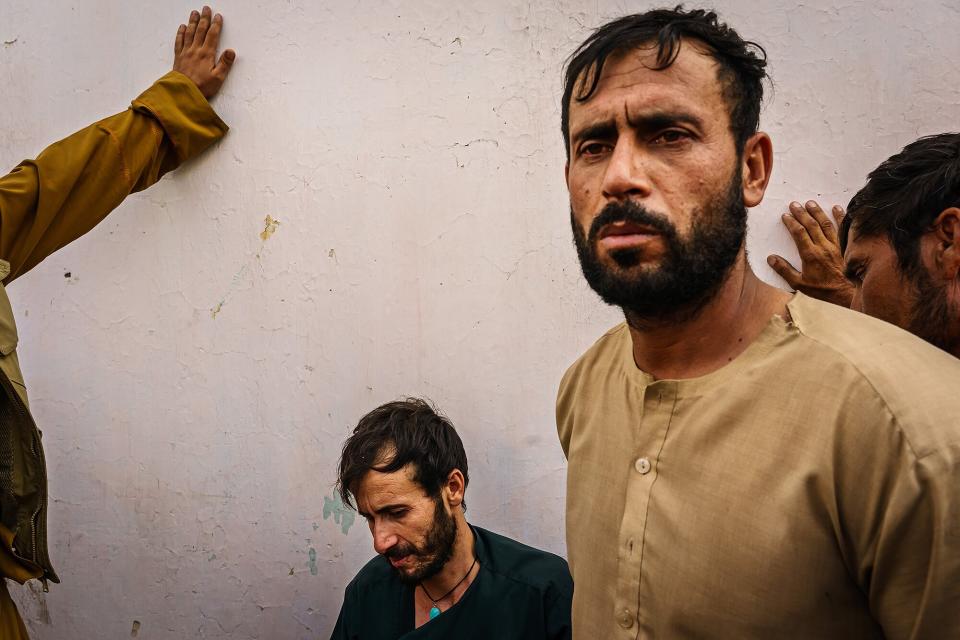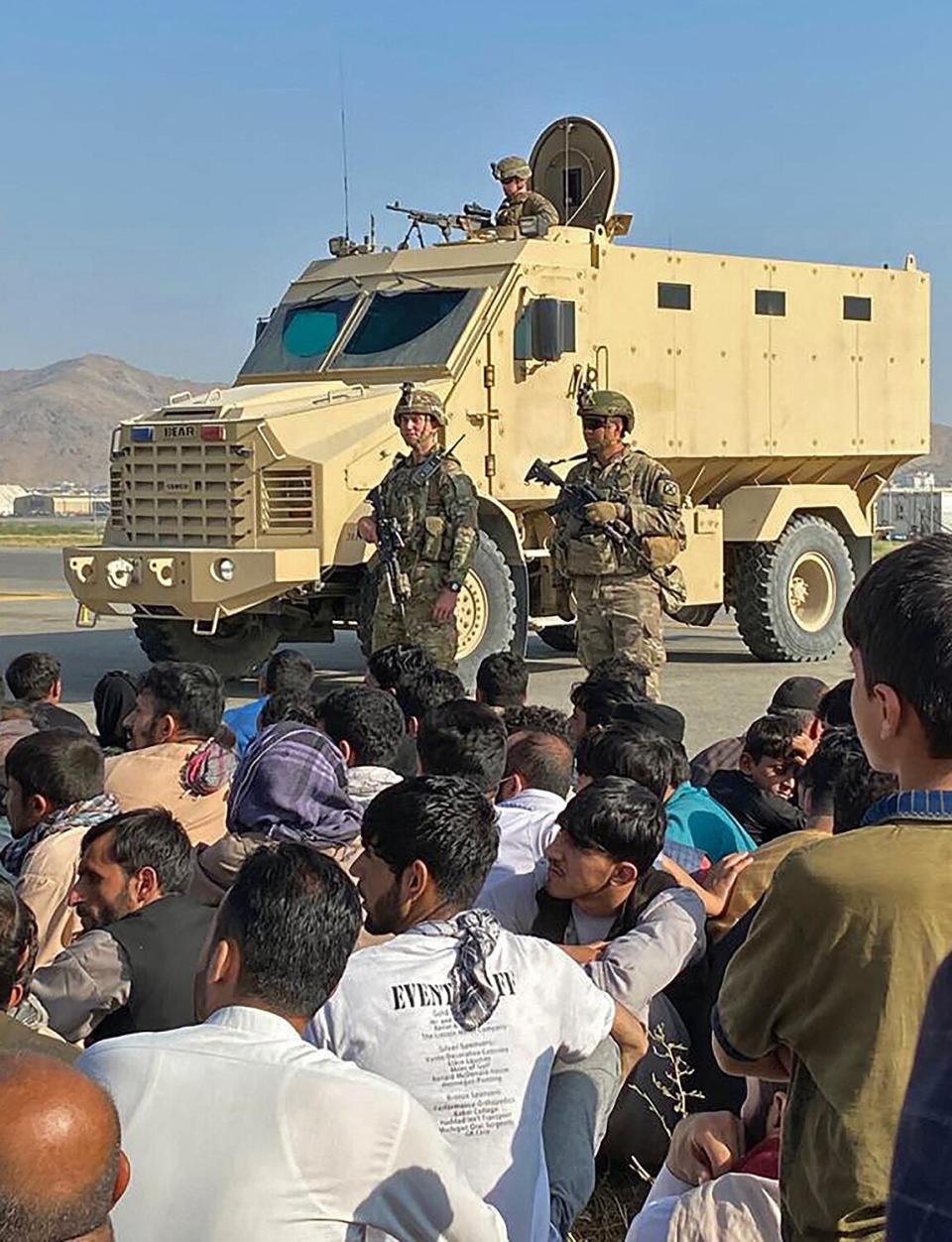Family of 10 Killed in U.S. Airstrike That Was Intended for ISIS, Relatives Say: 'Totally in Shock'

MARCUS YAM/LOS ANGELES TIMES/Instagram The Ahmadi family
An Afghan family says a U.S. airstrike meant for some of those responsible for the Aug. 26 Kabul airport attack actually killed 10 people — including an employee of an American aid group and five kids under the age of 5 — according to multiple news reports.
Pentagon officials said the strike was "righteous" and that "at least one of those people that were killed was an ISIS facilitator."
But they acknowledged the other casualties and said that an investigation was ongoing.
"We certainly never want to see innocent life taken as a result of U.S. military operations," a Department of Defense spokesman told reporters on Thursday.
A neighbor told The Washington Post the explosion occurred as the family returned home in their car on the afternoon of Aug. 29, describing the harrowing scene that unfolded after the neighborhood was rocked by the explosion, which appeared to directly hit the vehicle while many family members were inside.
According to The New York Times, the driver was Zemari Ahmadi, who had been on his way home after dropping off some co-workers. The missile struck after relatives had come out to greet him.
"The bodies were covered in blood and shrapnel, and some of the dead children were still inside the car," a neighbor said to the Post.
Days later, the remains of the family's incinerated Toyota Corolla were still in a heap on the driveway of their home in Khwaja Burgha, a few miles west of Kabul's airport, according to reporters for The Los Angeles Times.
The reporters said that what appeared to human remains, including flesh and a tooth, were also visible near the pile of metal and melted plastic and that "metal fragments consistent with some kind of missile" were also visible.
According to news reports, among the 10 people killed in the blast were Ahmadi, an engineer for the California-based charity Nutrition and Education International, and three of his sons; 30-year-old Ahmad Naser, a U.S. military contractor who had hoped to be evacuated from Kabul; three other children; and a 25-year-old relative who was soon to be married.
"America used us to defend itself, and now they've destroyed Afghanistan," Ahmadi's daughter, Samia, said after the attack, according to the New York Times. "Whoever dropped this bomb on our family, may God punish you."

MARCUS YAM/LOS ANGELES TIMES/Getty The Ahmadi family
Ahmadi's brother Ramal told the L.A. Times he was inside at the time. Three of his kids were killed.
"There was just this big explosion. I was totally in shock," he said. "I didn't understand what happened."
U.S. officials said the airstrike — which followed another operation on Aug. 27 in a different pat of Afghanistan — was intended to prevent further attacks on the evacuation at Kabul's airport after the Aug. 26 suicide bombing there killed more than 180 people, including 13 U.S. service members. A branch of the Islamic State claimed responsibility.
In an initial statement following the strike on Aug. 29, a spokesperson for the U.S. Central Command said it had hit its intended target and that there were no indications of loss of civilian life.
That account changed amid the stories from people on the ground in Kabul who said their relatives had been killed.
The Pentagon said it would investigate but maintained that "this strike was based on good intelligence, and we still believe that it prevented an imminent threat to the airport and to our men and women that were still serving at the airport."
"Were there others killed? Yes, there are others killed. Who they are, we don't know," Gen. Mark A. Milley, the chairman of the joint chiefs of staff, told reporters on Sept. 1.
"We'll try to sort through all of that," Milley said. "But we believe that the procedures at this point — I don't want to influence the outcome of an investigation — but at this point, we think that the procedures were correctly followed and it was a righteous strike."
The Pentagon has also noted "substantial and powerful subsequent explosions resulting from the destruction of the vehicle, indicating a large amount of explosive material inside," though relatives of those killed disputed that to the Times, saying a nearby house had not been destroyed.
Relatives told the L.A. Times they heard only one explosion.
Ahmadi's family rejected the idea that he or any of them had ties to the Islamic State.
"How was he ISIS? Look at this. They lied about us in the media," a cousin told the New York Times. And the president of the charity where Ahmadi worked praised him in a statement: "Just yesterday, he prepared and delivered soy-based meals to hungry women and children at local refugee camps in Kabul."
According to the New York Times, a U.S. military analysis found it "possible to probable" there were bombs in the vehicle.

SHAKIB RAHMANI/AFP via Getty Afghanistan
Officials told the Times they called in the airstrike believing it would prevent another, imminent attack at the airport; they cited a burgeoning circumstantial case including how the vehicle's behavior had aligned with intercepted communications from suspected extremists.
The officials said the vehicle did not appear to be near many civilians at the time — only seeing people gather around the vehicle after the missile was deployed.
The Associated Press reports that the 20-year combat mission in Afghanistan had a heavy human cost. According to the AP, some 47,245 Afghan civilians were killed in the war along with 66,000 Afghan national military and police officers.
These include numerous people killed in American airstrikes, which have a long and controversial history of civilian casualties despite the military's precautions.
At least 2,448 American service members have been killed in Afghanistan through April, before the Kabul airport bombing.
The military officially withdrew from the country on Aug. 30, ending America's longest war.

 Yahoo Finance
Yahoo Finance 